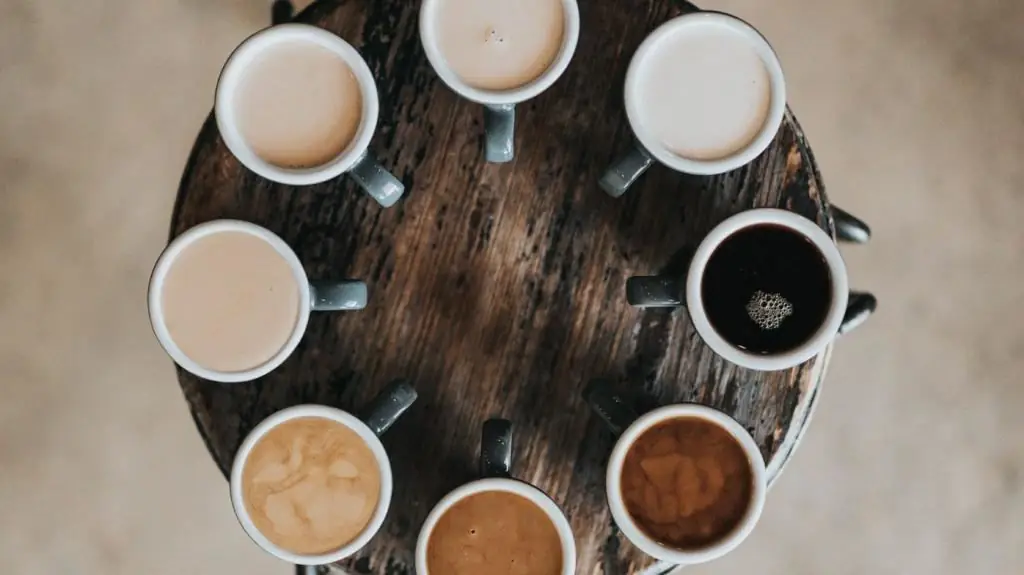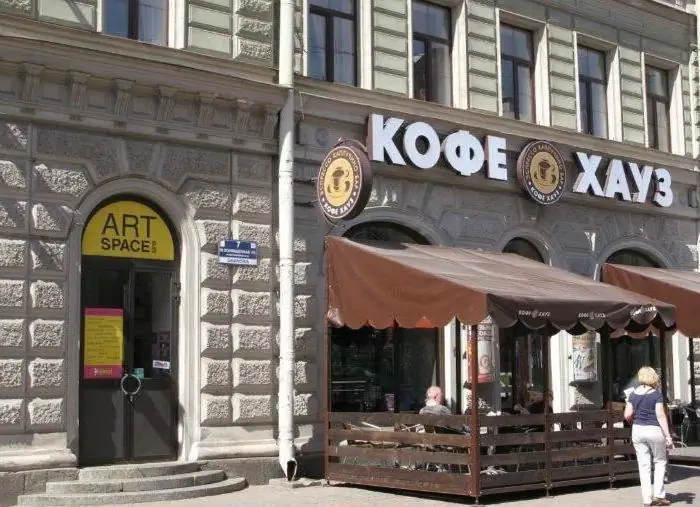2025 Author: Isabella Gilson | [email protected]. Last modified: 2025-01-23 12:50:30
If you are an avid coffee lover, then you are probably familiar with all the benefits of brewed coffee. Its varieties are incredibly numerous, they are classified according to such features as the botanical appearance of the coffee tree, the region of its growth, production technology, bean processing and additives.
Botanical view
Botanical species of coffee trees have more than a hundred names. But basically they are divided into 3 types: Arabica, Robusta and Liberica, which are quite different from each other:

- Arabica. So it is customary to call Arabian coffee, the grains of which are green with a bluish tinge. The grain size is medium, the length is from 9 to 15 mm. The drink of this type has a pleasant delicate taste and delicate aroma. The caffeine content is 0.6-1.5% which is average.
- Liberica (also Liberian coffee). Grains of dark red color and large size, length - from 20 to 27 mm. The drink has a rough taste, a sharp aroma, so this type is used mainly in the confectionery industry. It's all about the contentcaffeine - 1.2-1.5% (moderate).
- Robusta. Small coffee beans have different shades of yellow. When brewed, the taste and aroma are sharp, typical of coffee. There is a slight "sourness", because caffeine in this form contains 1.8-3% (the highest rates).
Interestingly, in most cases we will not find coffee with a 100% Arabica and Robusta content, but their mixture in different proportions almost completely filled the shelves.
Growth region
They say that coffee is a mirror of the area in which it was grown. In this vein, one cannot fail to recall one popular French expression:
The main thing is the taste of the earth (gout de terroir).

The main regions of the "coffee belt" are considered to be Central America, South America, Asia, Australia and Oceania, Africa and the Caribbean. It should be noted that the aromatic and taste properties of the drink differ not only in different regions, but also in different countries - they are influenced by too many factors: microclimate, weather conditions, terrain height, processing methods, and so on. Therefore, it is impossible to consider each country as a representative of its products within the framework of this article. This is clearly seen in this example: let's take South America - in each country of this continent, coffee will be unique. In Bolivia, it is medium-bodied, with chocolate and caramel notes, while in Ecuador, it is light-bodied, with moderate sourness and caramel, fruity, and nutty notes. The conclusion is:grains from different plantations have a special, exceptional hue.
Production technology
Everything is much simpler here - coffee production technology is divided into raw and roasted:
- Raw (green) coffee is a drink whose beans have not been roasted. It is divided into a huge number of species depending on the place of growth and care for it. The color of the grains varies from gray to blue-green. Some researchers claim that green coffee speeds up metabolism and controls weight, and also has energizing properties.
- Roasted coffee (roast levels: light, medium, strong, extra strong) reveals new notes of an already familiar drink.

Many quality characteristics of coffee depend on the degree of roasting:
- Low roast means high quality drink. Grains after roasting acquire a light brown color. The drink has a light wine note, a peculiar sour taste, to soften which it is recommended to add milk or cream.
- At medium roast, the beans are processed for a long time, but not brought to the release of oil. There are several varieties of this roast, each of which has its own name.
- Heavy roast gives coffee beans a dark brown color with oils that glisten on the surface. This method is also called Cuban, Spanish, French or just dark brown.
- Super high roast (Continental or Italian way). Usually packages with such coffee are markedEspresso, that is, the drink will be very strong, with its inherent taste and aroma.
Bean Processing
Coffee can be in beans or ground. We considered the types of coffee beans above, but it is worth mentioning the methods of grinding:

- Coarse grind - coarse grinding, in which grain particles do not exceed 0.8 mm. Mainly used in steam coffee makers. Without professional equipment with automation of all parameters, you can grind coffee for 10 seconds to achieve this result.
- Medium grind - medium grind. The most common grinding, which is intended for all types of equipment, both machine and manual type. For a simple coffee grinder, the grinding time is approximately 13 seconds.
- Fine grind - fine grinding. Designed for drip coffee makers and espresso brewing. To achieve this effect in a regular coffee grinder, you need 20 seconds.
- Pulverized - ultra-fine, powdery grinding. Usually used to brew Turkish coffee in Turkish.
Supplements
Coffee can be with or without additives. It is enough to remember that high-quality coffee varieties do not aromatize, since their taste properties are unique even without additives. But cheap coffees are flavored with essential oils, so they are in great demand because of the taste of cream, chocolate, Irish whiskey, cherries, orange, nuts and so on. But no matter how tasty these samples may seem, they do not differ in useful properties.

We hope that this article will help you to be more selective in choosing this drink. After all, Avicenna spoke about coffee like this:
It strengthens the limbs, cleanses the skin and eliminates puffiness, and gives the whole body a great fragrance…
Recommended:
How many calories are in coffee? Coffee with milk. Coffee with sugar. Instant coffee

Coffee is one of the most popular drinks in the world. There are many manufacturers of it: Jacobs, House, Jardine, Nescafe Gold and others. The products of each of them can be used to prepare all kinds of coffee, such as latte, americano, cappuccino, espresso. All these species have a unique specific taste, aroma and calorie content
How to choose a good wine

Russia is not a wine-producing country at all. We are strong in vodka, but the overwhelming majority of our weaker alcoholic drinks are imported. Wine in our mentality is surrounded by a certain halo of exceptional elitism, and often, going on vacation or a business trip abroad, friends and relatives ask to bring them a bottle of “something sort of … good” as a gift. You agree, but, having entered the most ordinary store, you are lost. What to choose from hundreds of items?
How to choose a good inexpensive wine?

Tips for choosing wine - good, but inexpensive. Where to buy, what to pay special attention to. How much should you start
Sediment in wine - is it good or bad? How to choose a good wine? natural wine

Wine is a product obtained from the fermentation of ordinary grape juice. So say winemakers and oenologists. Historians consider it one of the oldest drinks in the history of mankind. The ability to make wine is one of the first acquisitions of the ancients. When the juice extracted from grapes fermented in a jug many thousands of years ago, this was the beginning of the era of winemaking
Coffee houses St. Petersburg: "Coffee House", "Coffee House Gourmet". Where is the best coffee in St. Petersburg?

In this short article, we will discuss in detail the best coffee houses in St. Petersburg in order to determine where you should come to try delicious coffee, which can easily be called the best in the city. Let's get started

